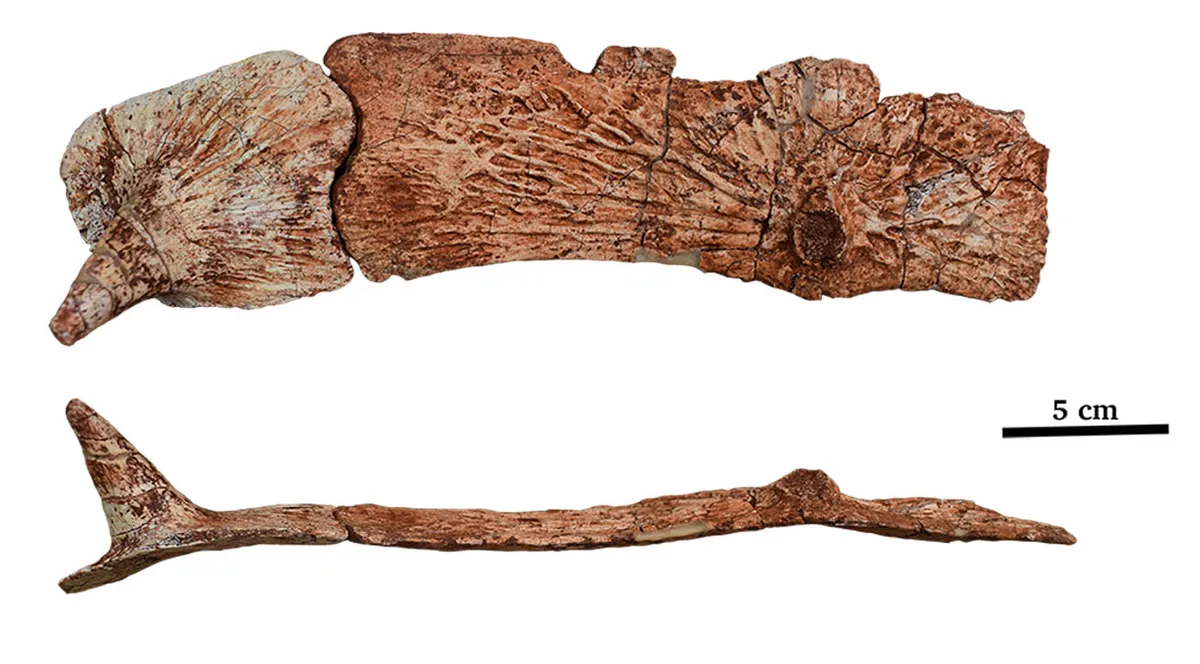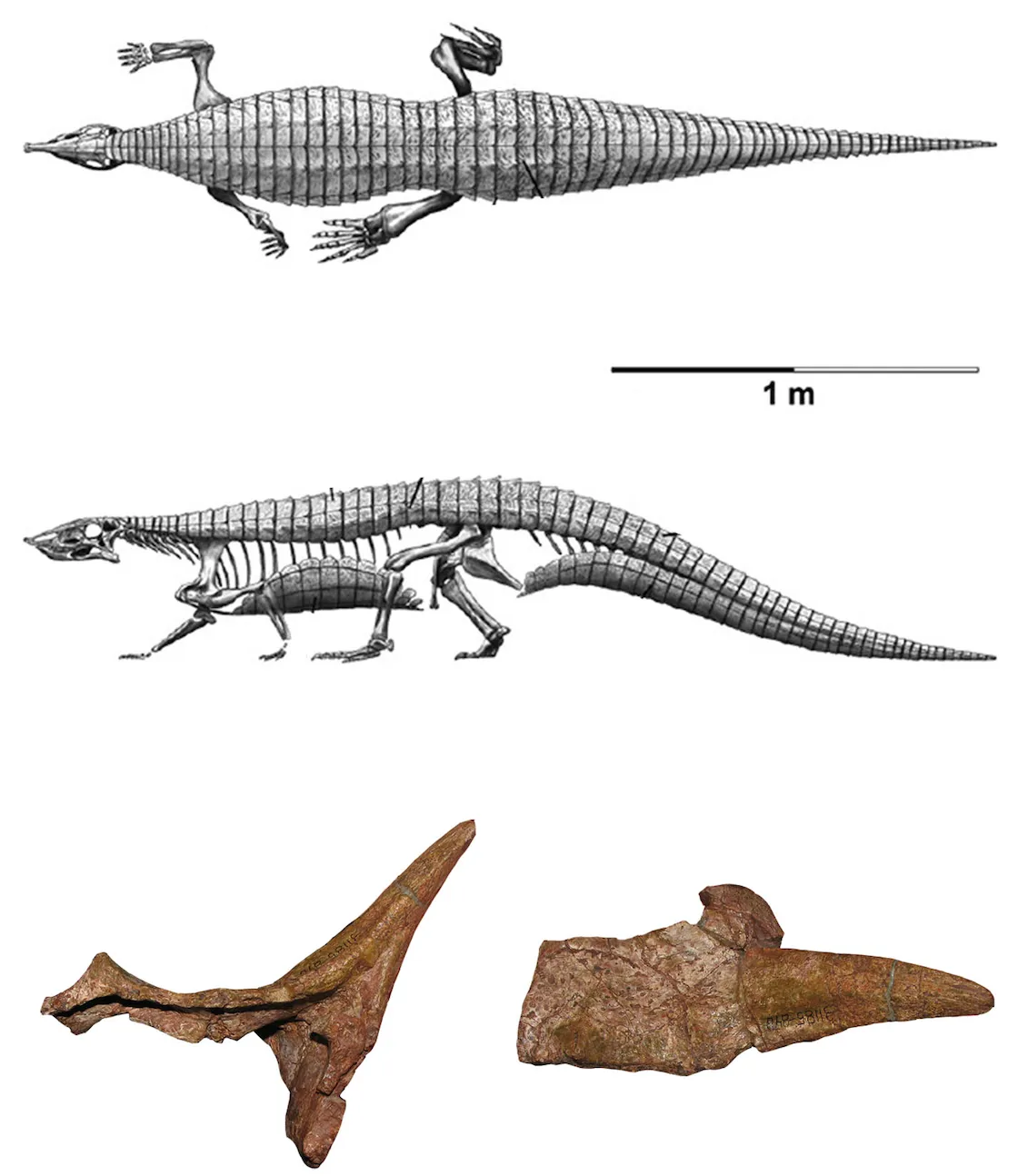During a trip to Texas Tech University, William Reyes, a doctoral student at the University of Texas Jackson School of Geosciences encountered the fossilised remains of an aetosaur, a heavily armoured cousin of modern crocodiles that ruled the world long before dinosaurs.
The specimen had been sitting on a shelf for 30 years, and until this moment hadn't be studied properly. Intrigued, Reyes and his colleagues set about identifying the aetosaur, eventually concluding that it was a new species. The research, published in The Anatomical Record, sheds light on the evolution of aetosaur armour.
- “This place was just crazy rich with dinosaur footprints”. Scientists buzzing after huge prehistoric discovery in Alaska
- Giant prehistoric sea lizard with dagger-like teeth discovered in Morocco
- Giant pre-historic worms discovered in Greenland

A rare find
Aetosaurs are best identified by the bony plates that make up their armour, but scientists don’t usually have many fossil skeletons to work with. The 'suit of armour' found in the Texas Tech University collection is different, in that most of its major parts remain intact.
“We have elements from the back of the neck and shoulder region all the way to the tip of the tail,” says Reyes, who led the research. “Usually, you find very limited material.”
The quality of the armour allowed Reyes and his collaborators to identify the specimen as a new aetosaur species. They named is Garzapelta muelleri; 'Garza' referring Garza County in north-west Texas, where the aetosaur was found, and 'pelta' deriving from the Latin word for shield, a nod to aetosaurs’ heavily protected body. The species name 'muelleri' came from Bill Mueller, the palaeontologist who originally discovered the fossil.



What did Garzapelta muelleri look like?
Garzapelta muelleri resembled a modern American crocodile but it had even more armour. It had bony plates (called osteoderms) all over its body that were embedded directly in the skin, forming a thick, tightly knit 'suit of armour'.
Additional protection from predators came from a series of curved spikes that spanned the side of Garzapelta muelleri.
“Take a crocodile from modern day, and turn it into an armadillo,” says Reyes.
Despite its daunting appearance, researchers think that aetosaurs were primarily omnivorous - unlike today's modern crocodiles.

Clues in the spikes
According to Reyes, analysis of Garzapelta’s plates clearly sets it apart as a new species; the study identifies the way the plates fit together, and the unique bumps and ridges on the bones as examples of this.
Figuring out where exactly Garzapelta fits into the larger aetosaur family tree was more difficult, Reyes admits. Analysis of one part of the fossil – for example, the armour that ran down its back – would place Garzapelta somewhere difference to analysis of another section, such its midsection.
The researchers determined that the spikes must have evolved independently through convergent evolution (the independent evolution of similar traits in different species).
“Convergence of the osteoderms across distantly related aetosaurs has been noted before, but the carapace (the armour) of Garzapelta muelleri is the best example of it and shows to what extent it can happen and the problems it causes in our phylogenetic analyses,” says Reyes.

Bill Parker, an aetosaur expert and park palaeontologist at Petrified Forest National Park in Texas says: “These specimens weren’t just dug in the field yesterday. They’ve been sitting in the museum for decades and it just takes someone like Will to come along and finally decide to study them and make them come to life.”
Using aetosaur fossils in the Jackson School’s collection, most of which were found during the 1940s as part of excavations done by the Works Progress Administration, Reyes is currently exploring how an animal’s age or sex could also affect armour appearance.

The research was funded by the National Science Foundation and the Jackson School. The study co-authors are Jeffrey Martz, an associate professor at the University of Houston-Downtown, and Bryan Small, a research associate at the Museum of Texas Tech University.
- How were dinosaur footprints preserved?
- Fossils guide: how they’re formed, where to find them and whether it’s ok to keep them
- Best dinosaur documentaries to watch
- Megalodon: the super-shark that could swallow killer whales whole but didn't like the cold
Main image: An artist’s interpretation of the newly identified aetosaur, Garzapelta muelleri. Credit: Marcio L. Castro.
